Your Tax Refund Can Help You Achieve Your Homebuying Goals with Grell Realty Group in San Antonio, TX
Your Tax Refund Can Help You Achieve Your Homebuying Goals Meta Title: How to Use Your Tax Refund to Achieve Your Homebuying Goals If you're dreaming of becoming a homeowner, you may be wondering how to save for a down payment or pay off debt before buying a home. One smart strategy that could help you achieve your homebuying goals is to use your tax refund wisely. By making the most of this financial windfall, you can set yourself up for success on your path to homeownership. Let's explore some smart ways to use your tax refund to achieve your homebuying goals. 1. Build your down payment fund One of the biggest hurdles to homeownership is saving for a down payment. A substantial down payment can lower your monthly mortgage payments and potentially eliminate the need for costly private mortgage insurance (PMI). Using your tax refund to bolster your down payment fund can give you a significant head start on your homebuying journey. Consider opening a separate savings account specifically for your down payment funds. Automate transfers from your checking account to this dedicated account, allowing your tax refund to grow over time. Check with banks and credit unions in the San Antonio area to see if they offer high-interest savings accounts or special down payment savings programs to help you maximize your savings. Internal link: What You Should Know About Saving for a Down Payment 2. Pay off high-interest debt Before diving into homeownership, it's essential to have your finances in order. One way to achieve financial stability is to pay off high-interest debt, such as credit card balances or personal loans. Your tax refund can provide the funds needed to tackle these debts head-on, freeing up more of your monthly income to put towards your dream home. Start by listing your debts from highest interest rate to lowest. Consider using the "debt avalanche" method, where you allocate the majority of your tax refund towards the debt with the highest interest rate, while still making minimum payments on the other debts. This strategy allows you to save on the overall interest you'll pay in the long run. Internal link: Your Needs Matter More Than Today's Mortgage Rates 3. Improve your credit score Your credit score plays a crucial role in the homebuying process. Lenders use it to assess your creditworthiness and determine the interest rate you'll qualify for. If your credit score needs a boost, allocating your tax refund towards debt repayment or credit card balances can help improve your credit utilization ratio and, in turn, increase your credit score. Consider pulling your credit report and reviewing it for any errors or inaccuracies. If you spot any, take steps to dispute them and have them corrected. Additionally, paying off debts can show lenders that you're responsible with credit and can help raise your credit score over time. Internal link: Why Buying a Home May Make More Sense Than Renting 4. Save for closing costs and other expenses While the down payment is a significant expense when buying a home, it's not the only one. Closing costs, which typically range from 2% to 5% of the purchase price, can be a considerable financial burden. Your tax refund can be an excellent source of funds to cover these expenses, as well as other costs associated with homeownership, such as inspections, appraisals, and moving expenses. Consider creating a separate savings bucket specifically for closing costs and other homeownership-related expenses. By allocating your tax refund towards this account, you can ensure that you have the necessary funds when you're ready to make an offer on your dream home. Internal link: What You Should Know About Closing Costs 5. Seek professional advice Planning to use your tax refund to achieve your homebuying goals can be an exciting but complex process. It's crucial to seek guidance from a trusted real estate professional who can provide valuable insights and help you navigate the San Antonio housing market effectively. Reach out to our team at Grell Realty Group to discuss your homebuying goals and develop a personalized strategy that aligns with your financial situation and aspirations. We have years of experience assisting homebuyers in the San Antonio area, and we're committed to helping you achieve your dream of homeownership. Internal link: Why Buyers Need an Expert Agent by Their Side Remember, your tax refund can be a powerful tool in achieving your homebuying goals. Whether you decide to use it towards a down payment, debt repayment, improving your credit score, or saving for closing costs, using your tax refund wisely can set you on the path to homeownership. Take advantage of this financial opportunity to turn your dream of owning a home in San Antonio into a reality. "Using your tax refund to jump-start your savings for a home purchase can significantly impact your ability to achieve your homebuying goals." - Grell Realty Group Meta Description: Wondering how to save for a down payment or pay off debt before buying a home? Discover how to use your tax refund to achieve your homebuying goals with these smart strategies from Grell Realty Group, serving the San Antonio area.

Lending Standards Are Not Like They Were Leading Up to the Crash
You might be worried we’re heading for a housing crash, but there are many reasons why this housing market isn’t like the one we saw in 2008. One of which is how lending standards are different today. Here’s a look at the data to help prove it. Every month, the Mortgage Bankers Association (MBA) releases the Mortgage Credit Availability Index (MCAI). According to their website: “The MCAI provides the only standardized quantitative index that is solely focused on mortgage credit. The MCAI is . . . a summary measure which indicates the availability of mortgage credit at a point in time.” Basically, the index determines how easy it is to get a mortgage. Take a look at the graph below of the MCAI since they started keeping track of this data in 2004. It shows how lending standards have changed over time. It works like this: When lending standards are less strict, it’s easier to get a mortgage, and the index (the green line in the graph) is higher. When lending standards are stricter, it’s harder to get a mortgage, and the line representing the index is lower. In 2004, the index was around 400. But, by 2006, it had gone up to over 850. Today, the story is quite different. Since the crash, the index went down because lending standards got tighter, so today it’s harder to get a mortgage. Loose Lending Standards Contributed to the Housing Bubble One of the main factors that contributed to the housing bubble was that lending standards were a lot less strict back then. Realtor.com explains it like this: “In the early 2000s, it wasn’t exactly hard to snag a home mortgage. . . . plenty of mortgages were doled out to people who lied about their incomes and employment, and couldn’t actually afford homeownership.” The tall peak in the graph above indicates that leading up to the housing crisis, it was much easier to get credit, and the requirements for getting a loan were far from strict. Back then, credit was widely available, and the threshold for qualifying for a loan was low. Lenders were approving loans without always going through a verification process to confirm if the borrower would likely be able to repay the loan. That means creditors were lending to more borrowers who had a higher risk of defaulting on their loans. Today’s Loans Are Much Tougher To Get than Before As mentioned, lending standards have changed a lot since then. Bankrate describes the difference: “Today, lenders impose tough standards on borrowers – and those who are getting a mortgage overwhelmingly have excellent credit.” If you look back at the graph, you’ll notice after the peak around the time of the housing crash, the line representing the index went down dramatically and has stayed low since. In fact, the line is far below where standards were even in 2004 – and it’s getting lower. Joel Kan, VP and Deputy Chief Economist at MBA, provides the most recent update from May: “Mortgage credit availability decreased for the third consecutive month . . . With the decline in availability, the MCAI is now at its lowest level since January 2013.” The decreasing index suggests standards are getting much tougher – which makes it clear we’re far away from the extreme lending practices that contributed to the crash. Bottom Line Leading up to the housing crash, lending standards were much more relaxed with little evaluation done to measure a borrower’s potential to repay their loan. Today, standards are tighter, and the risk is reduced for both lenders and borrowers. This goes to show, these are two very different housing markets, and this market isn’t like the last time. Home Lending Standards Today: A Look at the Differences Since the 2008 Housing Crash Introduction:The 2008 housing market crash had a significant impact on the real estate industry and the economy as a whole. One of the key factors contributing to the crisis was loose lending standards that allowed borrowers to secure mortgages they couldn't afford. However, it's crucial to understand that the lending landscape has undergone significant changes since then. In this blog post, we will explore how home lending standards have evolved and why partnering with Grell Realty Group and the Grell Team, the leading realtor in San Antonio, TX, is the ideal choice for navigating today's lending environment. By incorporating SEO keywords, we aim to provide valuable insights to homeowners and prospective buyers, positioning this post for higher visibility on Google. 1. Stringent Mortgage Approval Process:Following the 2008 crash, mortgage lenders have implemented much stricter approval processes. Borrowers are now subject to rigorous verification of income, assets, credit history, and employment stability. Lenders carefully analyze debt-to-income ratios to ensure borrowers can comfortably afford their mortgage payments. These stringent measures help mitigate the risk of borrowers obtaining loans beyond their means and promote a healthier lending environment. Keywords: Home lending standards, mortgage approval process, borrower verification, debt-to-income ratio, risk mitigation. 2. Documentation and Proof of Ability to Repay:Unlike the pre-2008 era, lenders today require comprehensive documentation and proof of the borrower's ability to repay the loan. This includes thorough income verification, tax returns, bank statements, and employment history. Lenders scrutinize these documents to ensure borrowers have the financial capacity to meet their mortgage obligations. This shift in focus to responsible lending practices safeguards both borrowers and the stability of the housing market. Keywords: Documentation requirements, ability to repay, responsible lending practices, income verification, financial capacity. 3. Stricter Credit Score Requirements:Credit scores play a critical role in the lending decision process. Post-2008, lenders have raised the bar for credit score requirements. Higher credit scores are now necessary to qualify for competitive interest rates and favorable loan terms. This shift incentivizes borrowers to maintain a strong credit profile, promoting responsible financial behavior. Keywords: Credit score requirements, competitive interest rates, favorable loan terms, responsible financial behavior. 4. Increased Transparency and Consumer Protection:Regulatory reforms implemented after the housing crash have enhanced transparency and consumer protection measures in the lending industry. Lenders are required to provide clear and comprehensive disclosure of loan terms, fees, and potential risks. This ensures that borrowers have a full understanding of their mortgage commitments, empowering them to make informed decisions. Keywords: Regulatory reforms, transparency, consumer protection, loan disclosure, informed decisions. 5. Professional Guidance for a Smooth Mortgage Process:Navigating the complex landscape of home lending requires expert guidance. Grell Realty Group and the Grell Team are well-versed in the ever-changing lending standards. They can connect buyers with trusted mortgage professionals who possess extensive knowledge of current lending requirements. This partnership ensures a smooth and seamless mortgage process, saving buyers time and frustration. Keywords: Expert guidance, trusted mortgage professionals, current lending requirements, smooth mortgage process, time-saving. Conclusion:The lending standards in the housing market have significantly evolved since the crash of 2008. Stricter approval processes, documentation requirements, credit score standards, increased transparency, and consumer protection measures have created a more responsible lending environment. By partnering with Grell Realty Group and the Grell Team, buyers can benefit from their expertise and navigate the complexities of today's home lending landscape with confidence. Embrace the reassurance of a reputable realtor that prioritizes your financial well-being and ensures a successful home buying experience. Keywords: Home lending standards, responsible lending environment, reputable realtor, successful home buying experience, financial well-being.

Saving for a Down Payment? Here’s What You Need To Know.
If you're planning to buy your first home, then you're probably focused on saving for all the costs involved in such a big purchase. One of the expenses that may be at the top of your mind is your down payment. If you’re intimidated by how much you need to save for that, it may be because you believe you must put 20% down. That doesn’t necessarily have to be the case. As the National Association of Realtors (NAR) notes: “One of the biggest misconceptions among housing consumers is what the typical down payment is and what amount is needed to enter homeownership.” And a recent Freddie Mac survey finds: “. . . nearly a third of prospective homebuyers think they need a down payment of 20% or more to buy a home. This myth remains one of the largest perceived barriers to achieving homeownership.” Here’s the good news. Unless specified by your loan type or lender, it’s typically not required to put 20% down. This means you could be closer to your homebuying dream than you realize. According to NAR, the median down payment hasn’t been over 20% since 2005. In fact, the median down payment for all homebuyers today is only 14%. And it’s even lower for first-time homebuyers at just 6% (see graph below): What does this mean for you? It means you may not need to save as much as you originally thought. Learn About Options That Can Help You Toward Your Goal And it’s not just how much you need for your down payment that isn’t clear. There are also misconceptions about down payment assistance programs. For starters, many people believe there’s only assistance available for first-time homebuyers. While first-time buyers have many options to explore, repeat buyers have some, too. According to Down Payment Resource, there are over 2,000 homebuyer assistance programs in the U.S., and the majority are intended to help with down payments. That same resource goes on to say: “You don’t have to be a first-time buyer. Over 38% of all programs are for repeat homebuyers who have owned a home in the last 3 years.” Plus, there are even loan types, like FHA loans with down payments as low as 3.5% as well as options like VA loans and USDA loans with no down payment requirements for qualified applicants. If you’re interested in learning more about down payment assistance programs, information is available through sites like Down Payment Resource. Then, partner with a trusted lender to learn what you qualify for on your homebuying journey. Bottom Line Remember, a 20% down payment isn’t always required. If you want to purchase a home this year, reach out to a trusted real estate professional to start the conversation about your homebuying goals. Saving for a Down Payment: Your Guide to Achieving Homeownership in San Antonio, TX Purchasing a new home is an exciting milestone in life, but it often comes with the challenge of saving for a down payment. In San Antonio, TX, where the real estate market is vibrant and diverse, having a solid down payment is crucial to securing your dream home. In this detailed blog post, we will provide you with a comprehensive guide on how to save for a down payment, offering practical tips, expert insights, and the support of Grell Realty Group and The Grell Team. Let's embark on this financial journey towards homeownership together! 1. Set a Savings Goal:Begin by determining the down payment amount you aim to save. Ideally, a down payment should be 20% of the home's purchase price, but it can vary based on loan programs and personal circumstances. Use online mortgage calculators or consult with The Grell Team to determine a realistic savings goal tailored to your needs. 2. Create a Budget:Evaluate your current financial situation and create a comprehensive budget. Analyze your income, expenses, and discretionary spending to identify areas where you can cut back and allocate more funds towards your down payment savings. The Grell Team can provide personalized financial advice and help you devise an effective savings plan. 3. Automate Savings:Take advantage of automated savings tools offered by banks and financial institutions. Set up automatic transfers from your checking account to a dedicated savings account specifically for your down payment. This way, you consistently contribute to your savings without the temptation to spend the funds elsewhere. 4. Reduce Expenses:Examine your monthly expenses and identify areas where you can cut back or make cost-effective changes. Consider minimizing discretionary spending, reducing dining out, entertainment costs, and unnecessary subscriptions. Redirect those savings towards your down payment fund. 5. Increase Your Income:Explore opportunities to increase your income, such as taking on a side gig or freelancing, to supplement your savings. Direct the additional income towards your down payment fund, accelerating your progress and reaching your goal sooner. 6. Optimize Your Debt:Manage your existing debt by paying down high-interest loans or credit card balances. Lowering your debt-to-income ratio not only improves your creditworthiness but also frees up more funds for saving towards your down payment. Seek advice from The Grell Team on strategies to effectively manage your debts. 7. Explore Down Payment Assistance Programs:Investigate down payment assistance programs available in San Antonio, TX. These programs offer grants, loans, or other financial assistance to qualified homebuyers. The Grell Team is well-versed in these programs and can guide you through the application process. 8. Save Windfalls and Bonuses:Any unexpected income, such as tax refunds, work bonuses, or monetary gifts, should be saved towards your down payment. Resist the urge to spend these windfalls and direct them immediately into your savings account. 9. Downsize and Liquidate:Consider downsizing your belongings and selling items you no longer need. Host a yard sale, sell items online, or explore consignment options. Use the proceeds to bolster your down payment savings. 10. Seek Professional Guidance:Work closely with Grell Realty Group and The Grell Team, who possess extensive knowledge of the San Antonio real estate market. They can offer personalized advice, recommend financing options, and connect you with reputable lenders who understand your financial goals. Saving for a down payment may seem daunting, but with careful planning, discipline, and the support of Grell Realty Group and The Grell Team, you can turn your homeownership dreams into a reality. Embrace the tips provided, stay focused on your goal, and let the experts guide you through the process. Contact Grell Realty Group today to start your journey towards homeownership in beautiful San Antonio, TX.
Recent Posts
![Achieve Your Dream of Homeownership with Condos and Townhomes [INFOGRAPHIC]](https://img.chime.me/image/fs/chimeblog/20240217/16/w600_original_dfa7c035-5dfc-431f-9632-0a1387532bd1-png.webp)




![Winning Plays for Buying a Home in Today’s Market [INFOGRAPHIC]](https://img.chime.me/image/fs/chimeblog/20240210/16/w600_original_949ffbaa-7b98-4ded-bdcb-710d8e954a85-png.webp)





